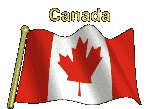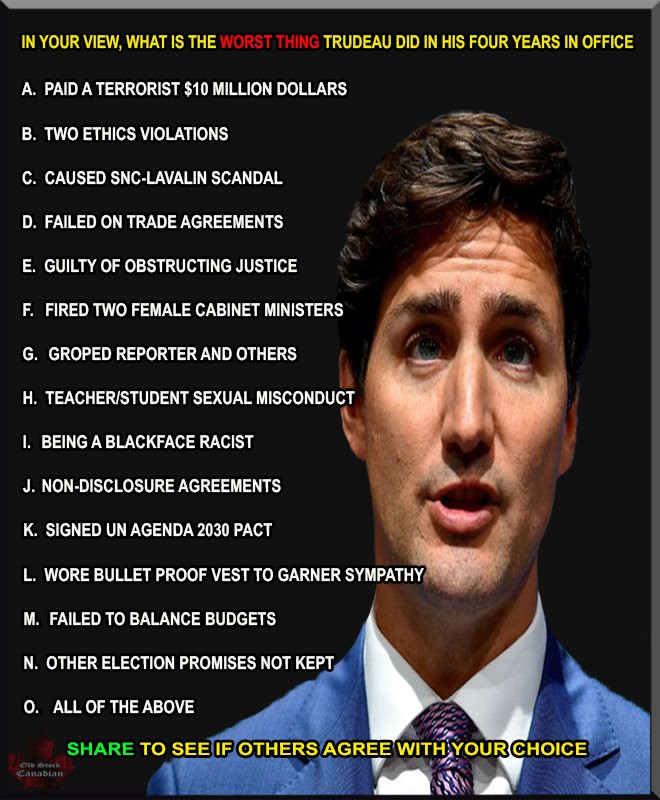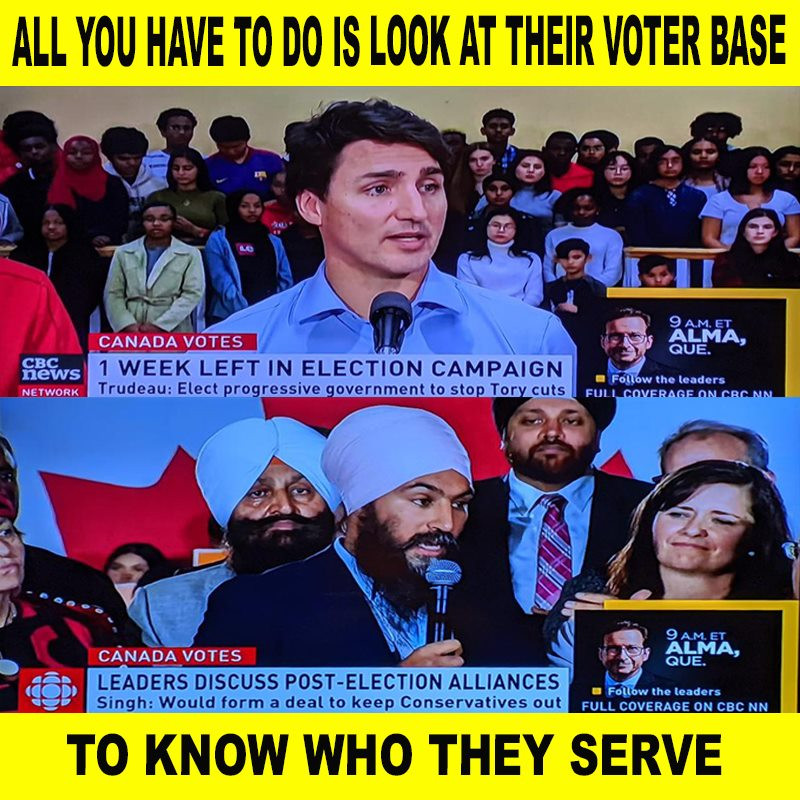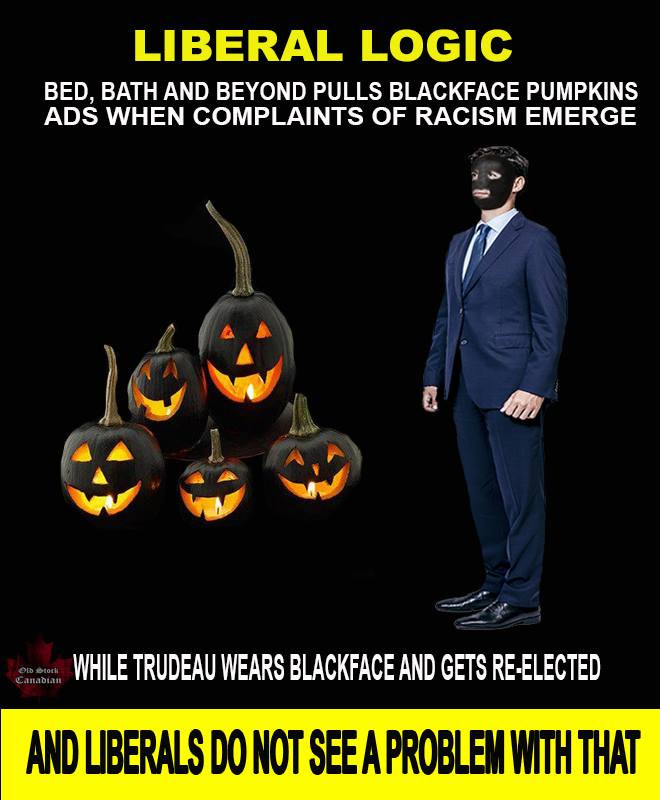By Alessandra La Posta
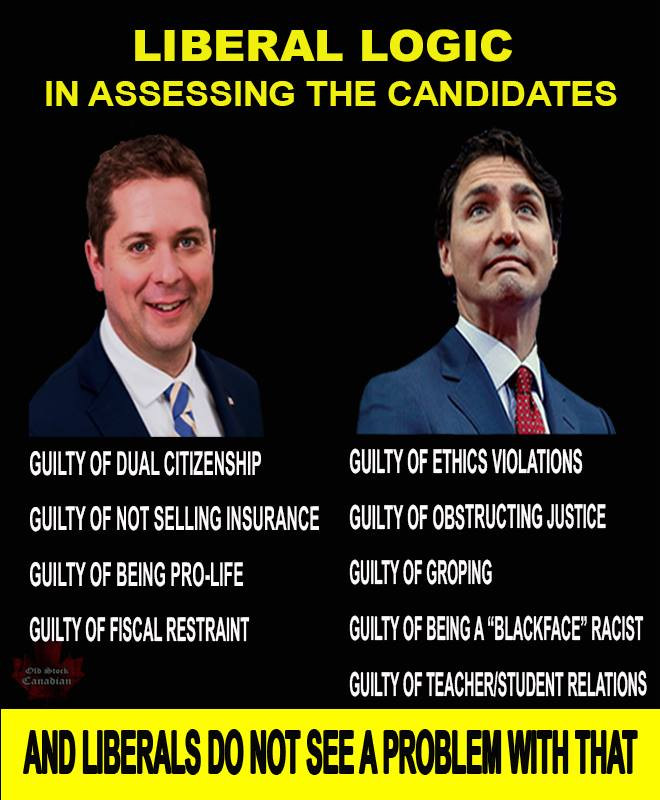
About & Origin
The meme portrays Andrew Scheer and Justin Trudeau side-by-side, facing off with a list of “crimes” they are accused of having committed. Scheer has a campaign-ready smile, while Trudeau has a grimace as if he were caught red-handed. Bold yellow-on-black and black-on-yellow text calls attention to the way in which Liberal voters allegedly fail to critically assess the candidates’ actions and proposed policies.
The unique visual style of images, the accompanying accusatory text and the Old Stock Canadian logo on a maple leaf represents a typical iteration of content produced by users who support the Old Stock Canadian Facebook page. The page promotes Conservative values, idealizes a homogenous patriotic identity, and serves as a hub for conservative opinions. Unlike other meme pages, Old Stock Canadian users try to establish their own meme brand by creating their own templates to cover the latest scandals and debates surrounding the election, especially attacks on the Liberal party. Since the memes do not follow common meme standards and templates, they are absent from the Know Your Meme database.
A Google Image Reverse search revealed that the meme references popular culture movie posters such as Wall Street (1987)[1] and The Insider (1999),[2] films which tell the stories of whistleblowers and corrupt businessmen. Coincidence or not, they parallel the roles of Scheer and Trudeau as they are portrayed in this meme.
Context & Circulation
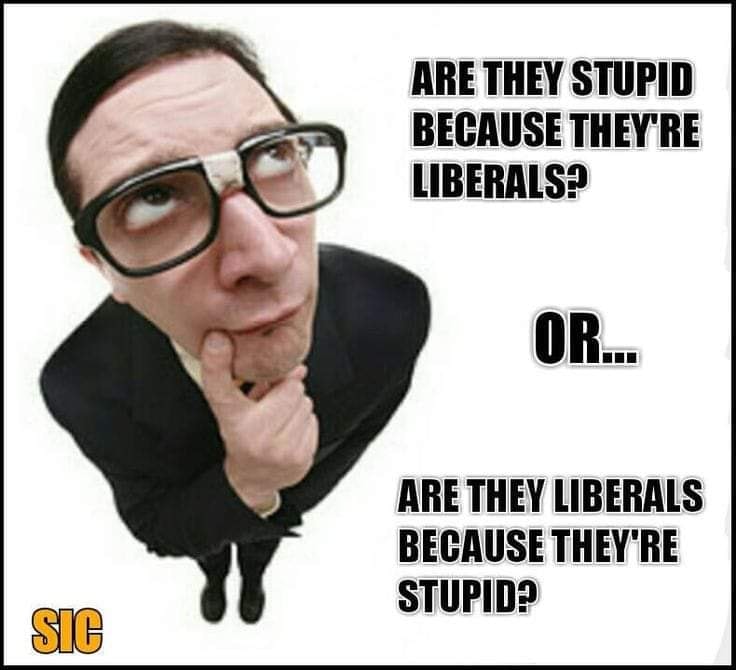
This meme first appeared on the Old Stock Canadian Facebook page on October 6, 2019. With 24,948 likes and 26,794 followers, the page was moderately active during the election campaign with an average of 4 posts per day, and a total of 99 memes between September 29 and October 28. The meme received 430 reactions, 71 comments, and 799 shares, making it one of the top most engaged posts on the page. The most liked meme response asks, “Are they stupid because they’re liberals? Or… Are they liberals because they’re stupid?” to poke fun at those supporting Trudeau despite the charges listed in the meme.
Analysis
Images make arguments. However, images fill in for gaps in the argument when they are placed in a relationship with one another or “juxtaposed to suggest associations, causal connections, contrasts, analogies, and generalizations.”[3] By placing Scheer and Trudeau next to each other, immediately a comparison is made of their portraits. Scheer looks professional, welcoming, and campaign-ready. Trudeau looks caught-off-guard and unprepared for cameras. “Facial expressions and gestures are one way images make arguments,” and can reinforce particular opinions already held by viewers about them[4]. These visuals alone elicit a critical assessment of their attributed “competency, trustworthiness, qualification[s], and leadership ability.”[5] If Trudeau looks unprepared and as if he has made a mistake, it follows to ask: is he prepared and qualified to manage and lead a country?
The fact that the visuals were deliberately selected and only specific charges highlighted calls attention to the way in which the truth behind the candidates and the information put forward to persuade voters is highly filtered[6]. This demonstrates how meme makers attempt to appeal “to the sympathy or emotional responses of an audience,” rather than presenting valid and accurate information to viewers[7]. The meme addresses viewers with an implicit claim to factualness that distracts attention from critically investigating the claims made in the meme. Instead, the meme presents characterizations of Scheer and Trudeau that the viewers are expected to support at face value. The meme thus serves to further polarize the Liberal-Conservative divide through opposing Trudeau’s allegedly severe shortcomings and failures with the allegedly harmless ones of Scheer. The makers of this meme aim for emotional responses from viewers, hoping to rally more Conservative support around Scheer’s candidacy. Rather than presenting what Scheer has to offer in terms of policy proposals, he is painted as the desirable candidate solely on the grounds of the claim that Trudeau is entirely unfit for the office of Prime Minister.
[1] “Wall Street 1987,” IMDB, Accessed on December 12, 2019, https://www.imdb.com/title/tt0094291/
[2] “The Insider 1999,” IMDB, Accessed on December 12, 2019, https://www.imdb.com/title/tt0140352/
[3] Schill, Dan. “The Visual Image and the Political Image: A Review of Visual Communication Research in the Field of Political Communication.” The Review of Communication 12, no. 2 (2012): 122.
[4] Schill, 123.
[5] Schill, 123.
[6] Blair, The Rhetoric of Visual Arguments, 51.
[7] Blair, 54.

